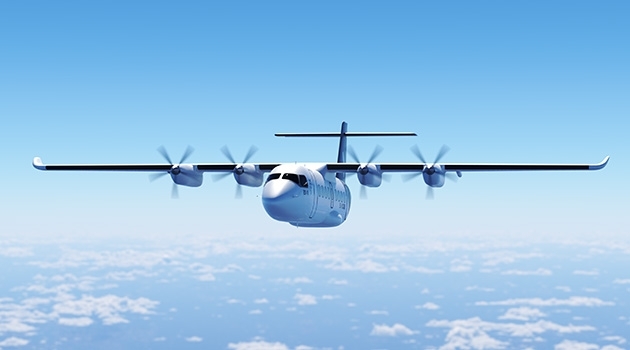Electric flight poised for new heights
Electric cars have long been established on Sweden’s roads. Now electric aircraft are being primed to seize the skies. “Sweden meets all the requirements for domestic aviation to switch to electric flight in the foreseeable future,” says Mauritz Andersson, a researcher in electricity.
“The climate situation calls for alternative modes of transport, and development of electric aircraft is now making real progress. All the major operators in the sector are involved, and for domestic air travel to be largely electrified in just a few years’ time is fully plausible. This may seem optimistic, but the fact is that in the 1960s the US took less than ten years to put the first man on the Moon. Basically, it’s about having the courage to commit,” says Mauritz Andersson, researcher in electricity at Uppsala University.
Electric aircraft have a longer history than one might think. Back in 1973, a solitary pilot flew 14 minutes without fossil fuels. For many years, gliders have started by means of electric auxiliary motors alone. Today, drones are a familiar sight in the sky. And just under a year ago Airbus test-flew its self-piloted Vahana Electric Air Taxi, designed for passenger transport. Despite these advances, the technology meets with mistrust, and a few years ago a commentator dismissed electric flight as a “growing urban myth”.
“To us, the people actively involved in developing electric flight, neither the successes nor the accompanying hype come as a surprise. There’ll always be sceptics but, as with climate-change deniers, my view is that the arguments we come up against are founded in ignorance. All the same, I understand that a lot of people want to see proof before allowing themselves to be convinced. And we could well say that we’re in the same phase today as electric-car development was in a decade ago,” states Mauritz Andersson.
Along with the US, China and Germany, Sweden is in the international vanguard in development of electric flight. Our country has all the skills and political driving force required, and also the infrastructural need. Fossil-fuelled aviation is no longer viable on a range of national routes and, for retained communications with many Swedish destinations, electric aircraft are a genuine option. Spring 2018 therefore saw the launch of ELISE, Electric Air Transport in Sweden, a project that brings researchers, companies and government agencies together for the purpose of introducing electric flight into Swedish passenger transport as soon as possible.
“Creating sustainable electric air transport involves more than building an electric aircraft. At Uppsala University, we possess much of the cutting-edge knowledge that’s required. For instance, we have the Ångström Advanced Battery Centre, the skills centre for battery research that we’ve recently started collaborating with. Today, Uppsala is the academic hub in ELISE, and there’s ample scope to carry on with the development work on home ground. One need I see is to introduce study programmes in the area, since this is an industry in which skilled employees will soon be a hard currency,” says Mauritz Andersson.
Electric-powered passenger flight has many advantages: reduced carbon emissions, of course, but also more reliable operational engines. While conventional engines are composed of hundreds of mobile parts, their electric counterparts often have only one. Reduced noise levels and short runways mean that airports can be centrally located, which will cut passengers’ total door-to-door travel time. In Norway, where conditions closely resemble those in Sweden, the politicians have already adopted the explicit goal of all domestic aviation being powered by electricity by 2040.
“Sweden’s government is currently accumulating knowledge and data about electric aircraft, and my hope is that this will culminate in a goal strategy corresponding to Norway’s. In the 1950s we were able, with a political will, to create one of the world’s most advanced air forces. And if we succeed in mobilising investors and government agencies, all the present-day visions will be fully achievable. In ELISE we’re developing aircraft models that, by as early as 2025, will be certified and operating for transport of up to 19 passengers. Several regions have expressed their interest in being destinations. One is Gotland, and the prospect of the University’s researchers being able to board an electric flight to Visby during the present decade is undeniably an inspiring thought.”
Facts
- The ELISE project, Electric Air Transport in Sweden, is coordinating the development of electric aircraft in Sweden.
- ELISE is now in the second phase (of three altogether) funded by Vinnova, Sweden’s innovation agency, and is currently developing an electric aircraft capable of flying 400-kilometre routes. The aim is to get this aircraft certified by the year 2025.
- Partners in the consortium are Uppsala University, Chalmers University of Technology, KTH Royal Institute of Technology, Linköping University, Luleå University of Technology, RISE Research Institutes of Sweden, North Sea Drones, Heart Aerospace and Icarus Simulation.
- Represented on the ELISE advisory board are Saab, GKN Aerospace, LFV – Air Navigation Services of Sweden, Swedavia Airports, Svenska Flygbranschen (the aviation sector organisation) and Sweden’s Regional Airports.

